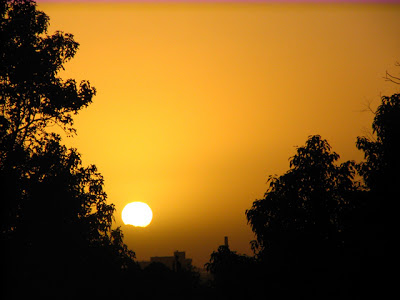
~ Day two of my road trip to Sydney unfolded with a beautiful, cold dawn, and the sight of a lone fox loping across an open field as it presumably headed home to its lair.
Breakfast in Ouyen consisted of coffee and bacon and eggs on toast, followed by a delicious vanilla slice from the local bakery. And why not? After all, Ouyen hosts an annual Vanilla Slice Festival, that attracts bakers from far and wide competing to see who can take the prize for making the best slice! Hey, in a tight tourist market, any angle will do if it helps get the visitors in.
Apparently, the former Premier of Victoria, Jeff Kennett stopped in at the local bakery about ten years ago for a coffee and piece of this delightful delicacy. He was so taken with the cake, that he quickly conceived of the idea for the Vanilla Slice Festival, which now takes place every September in this small rural Victorian country town.
And yes, I can thoroughly recommend the local delight.
This is my song for the open road,
The blue sky, and the lighter load.
The heart filled with a joyful song;
The summer breeze pushing us along.
© 2009. Jim Lesses. All Rights Reserved.
Observations
Dry. Everything is so dry.
Murphy’s Swamp? Dry. It probably hasn’t been a ‘swamp’ for years.
Creeks and rivers? Dry. Who knows when they last ran with flowing water? Or for how long. All along the highway, signs just before isolated country towns tell the tale: Stage 3 water restrictions in force. Sometimes the luckier towns, those with a more regular supply of the precious liquid only face Stage 2 or even Stage 1 water restrictions. But it seems that virtually all towns face some level of water restrictions.
Meet The Press
One of my rituals whenever I take a road trip is to purchase local papers in the towns I stop in. I do this to get a snapshot of what issues and concerns are foremost in the minds of the local communities.
Many of these local papers are quite small, often no more than 8-16 pages. The North West Express, at eight pages, is no exception. It even contained an extra two page agricultural supplement, the Mallee Ag. News.
The main front page story (which spilled over to consume the whole of page two), concerned the Mallee Track Health & Community Service 2009 Debutante Ball, at which nine “beautifully dressed young ladies and their partners were presented…”
Another front page story presented a progress report on the forthcoming Wild Dog Mail Trek, which appears to be one of those events designed to test participants to the limit. This event apparently covers a distance of 68 kms, and according to the organizer, Terry Gibson “Walkers… have to be super fit (and a little mad) as there is no vehicle access to rescue them when they get out in the Wyperfeld Wilderness Zone.”
Meanwhile, the Mallee Ag. News supplement offered 'Top Tips To Be Water Savvy', which, given the parlous state of the water situation in the region – already noted above – seemed to be very timely.
Distance from Ouyen to Sydney – 1100 Kms.
Make a Note of That: The lovely new public convenience behind the old court house in the main street, also includes free showers. Just the thing for the weary (and smelly) road warrior looking to freshen up after a long day on the road.
IMAGE: Here Comes The Sun, by Jim Lesses
















 ~ Until 1975, Hanging Rock was a volcanic rock formation unknown to most people outside of
~ Until 1975, Hanging Rock was a volcanic rock formation unknown to most people outside of  ~ Day two of my road trip to Sydney unfolded with a beautiful, cold dawn, and the sight of a lone fox loping across an open field as it presumably headed home to its lair.
~ Day two of my road trip to Sydney unfolded with a beautiful, cold dawn, and the sight of a lone fox loping across an open field as it presumably headed home to its lair.